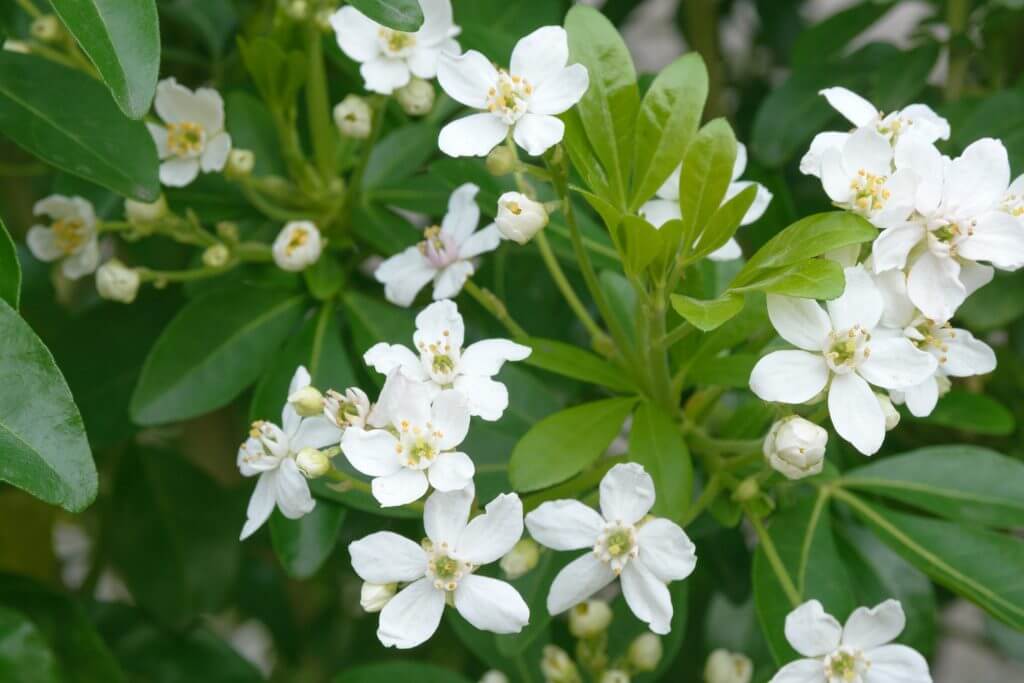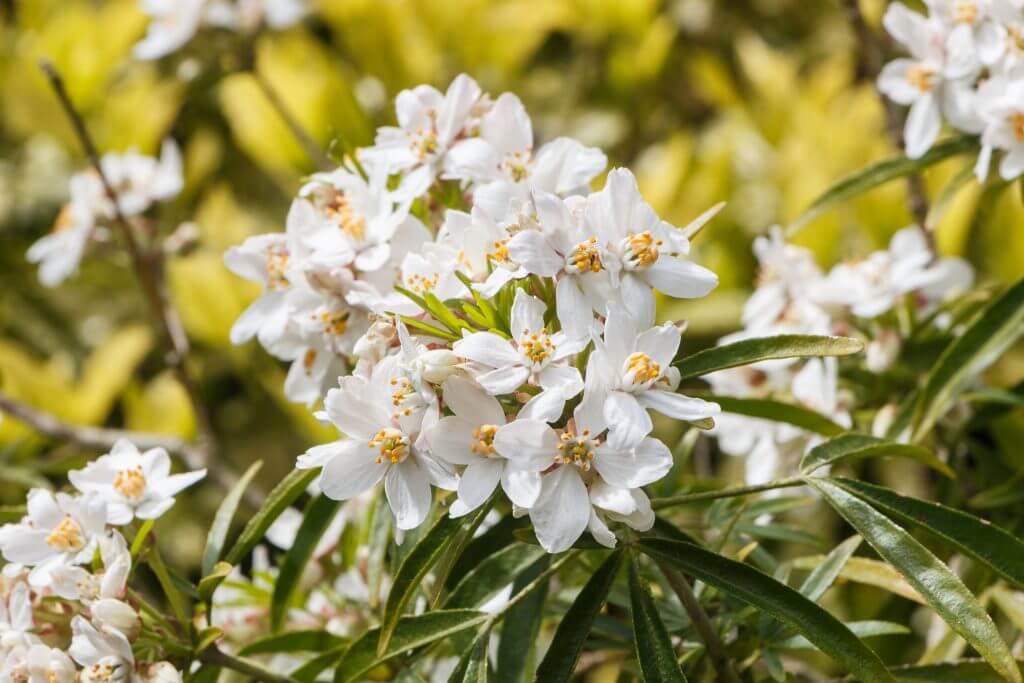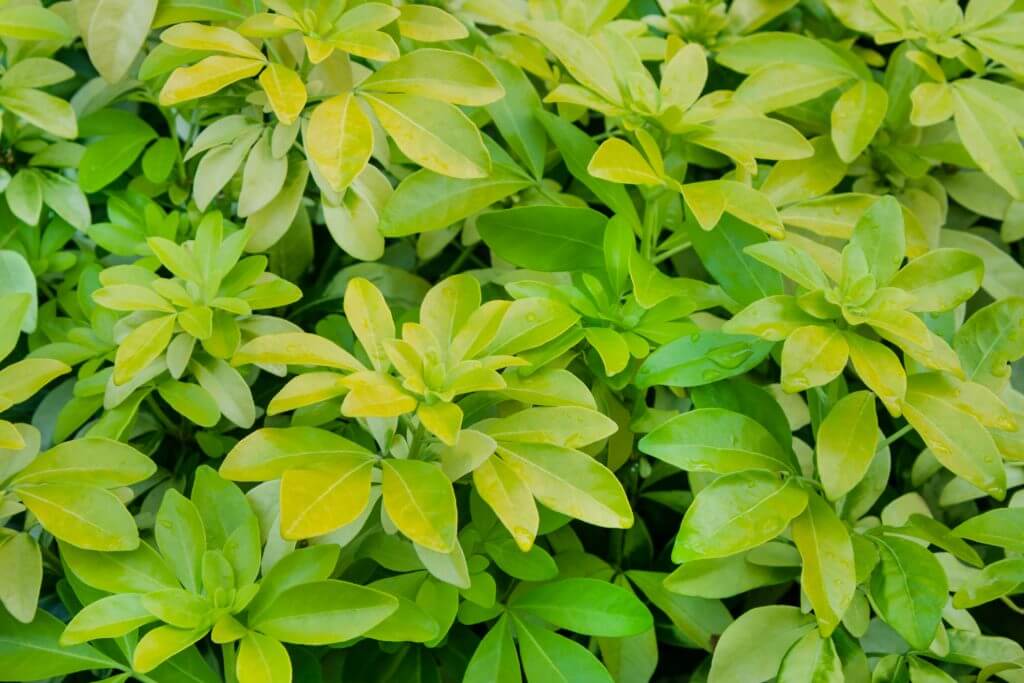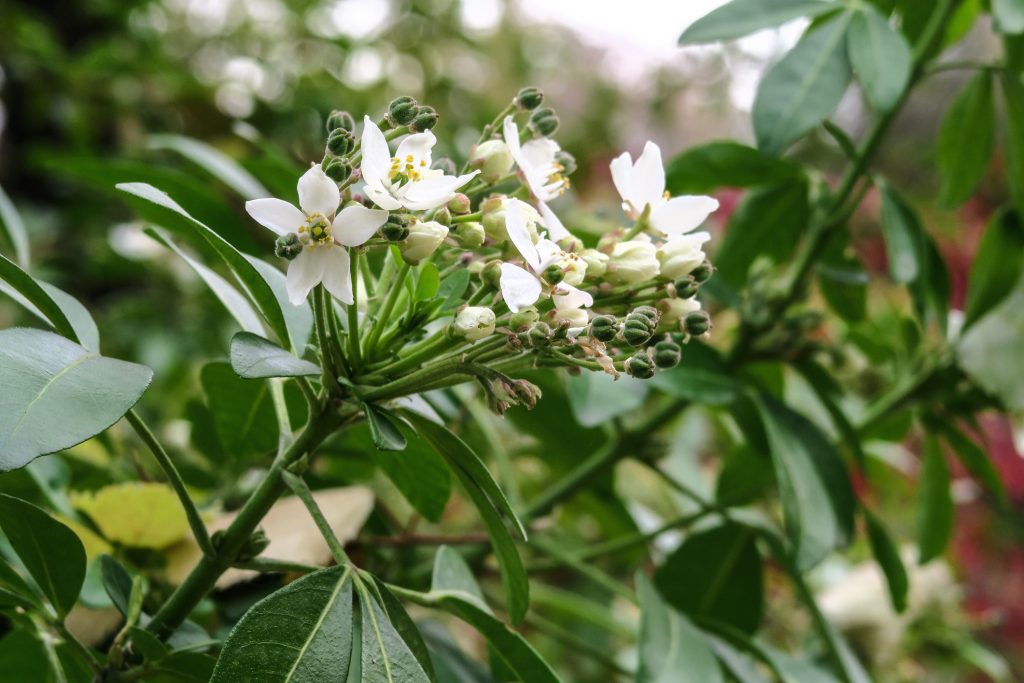Choisya ternata or Mexican Orange Blossom, as the name suggests, originated from Mexico. This moderate-sized fragrant perennial is ideal for decorative and practical purposes, such as a hedge or as a more pleasant camouflage for unsightly objects in the garden such as utility boxes or footings. It is a member of the Rutaceae family, more familiarly known as the citrus family. But unlike the many members of the citrus family, the Choisya ternata does not produce edible fruit but blooms delicate and fragrant flowers instead.

Characteristics of Mexican Orange Blossom
The Mexican Orange Blossom is a shrub with rounded, deep green, and aromatic foliage.
Size
It grows up to an approximate height and width of 2 metres by 2 metres, or it could sometimes be a little wider. The Mexican Orange Blossom is considered an average to fast-growing shrub, growing up to approximately 30cm to 60cm within a year.
Flowers
The Choisya ternata’s flowers are star-shaped, dainty, fragrant, and white. They bloom in little clusters around late spring or early summer. A lot of gardeners find the blooms ideal for flower arrangements or just for overall enjoyment in the garden. After the flowers wilt, the fragrance does not go away because the leaves are also very fragrant.


Leaves
The Mexican Orange Blossom’s leaves are deep green, glossy and leathery, and has three lobes.
Required overall growing conditions for Mexican Orange Blossom
Soil
Choisya ternata needs a well-draining, rich, and slightly acidic soil with a mix of peat moss.
Light and Temperature
The Choisya can thrive in full sun, or even in partly shaded locations, but it may not survive in freezing temperatures.
Watering
When grown in containers, Mexican Orange Blossom may require regular daily watering, especially during summer. It only needs moderate amounts in winter. The best thing to do is to occasionally check the soil to prevent it from completely drying out. Just the same, it is important to avoid overwatering.


Fertilising
The Choisya ternata may need fertilisers as soon as it blooms in late spring or early summer, and during the whole summer season.
Transplanting
The Mexican Orange Blossom is fast-growing and can easily outgrow smaller containers that is why it may need to be transplanted regularly to bigger pots until the plant reaches maturity.
Another option is to remove the topmost layer of soil and replace it with fresh soil, just in case the Choisya is already too big to transplant or move.
Trimming and Maintenance
The Mexican Orange Blossom is easy to trim because of its thin stems. However, it may require regular trimming since it could grow fast, up to 60 cm per year, and could even reach to heights of 2 metres or more. Cut above the sprouts to shape the shrubs.


Propagation
Choisya Ternata is such a fragrant and beautiful addition to the garden, and relatively simple to propagate through softwood cutting.
How to make softwood cutting:
- Should be done in spring or early summer
- Choose flexible and soft young shoot tips.
- Cut to about 7.5 to 12.5 cm
- To ensure that the cuttings will take root, dip it in root hormone
- Mix peat moss and perlite and place the cuttings
- Soil needs to be kept moist
- Use a plastic bag with holes to cover the containers. Poke hole on the cover for ventilation
- After the cuttings take root, which takes several weeks, remove from plastic. They are now ready for transplant.
Disease and Pests in Mexican Orange Blossom
Disease
Pale leaves: When the Mexican Orange Blossom is not getting enough nutrients, their usually dark green leaves may turn pale. Acid-based fertiliser may help remedy this problem.
Leaves falling off: Choisya ternata is perennial and should keep their foliage year-round. If leaves fall off in summer, then the plant may not be getting enough water. If they fall during winter, then consider the location, as it may be too warm for the plant.
Pests
The fragrant aroma of the Choisya ternata attracts pests such as whiteflies and aphids. Aphids leave sooty black deposits on the leaves from their excrement.
Treatment: Aphids can be dealt with through water, by washing them away and wiping the leaves with a moist cloth. Insecticides like neem oil are also useful for getting rid of aphids, as well as dealing with whiteflies.
